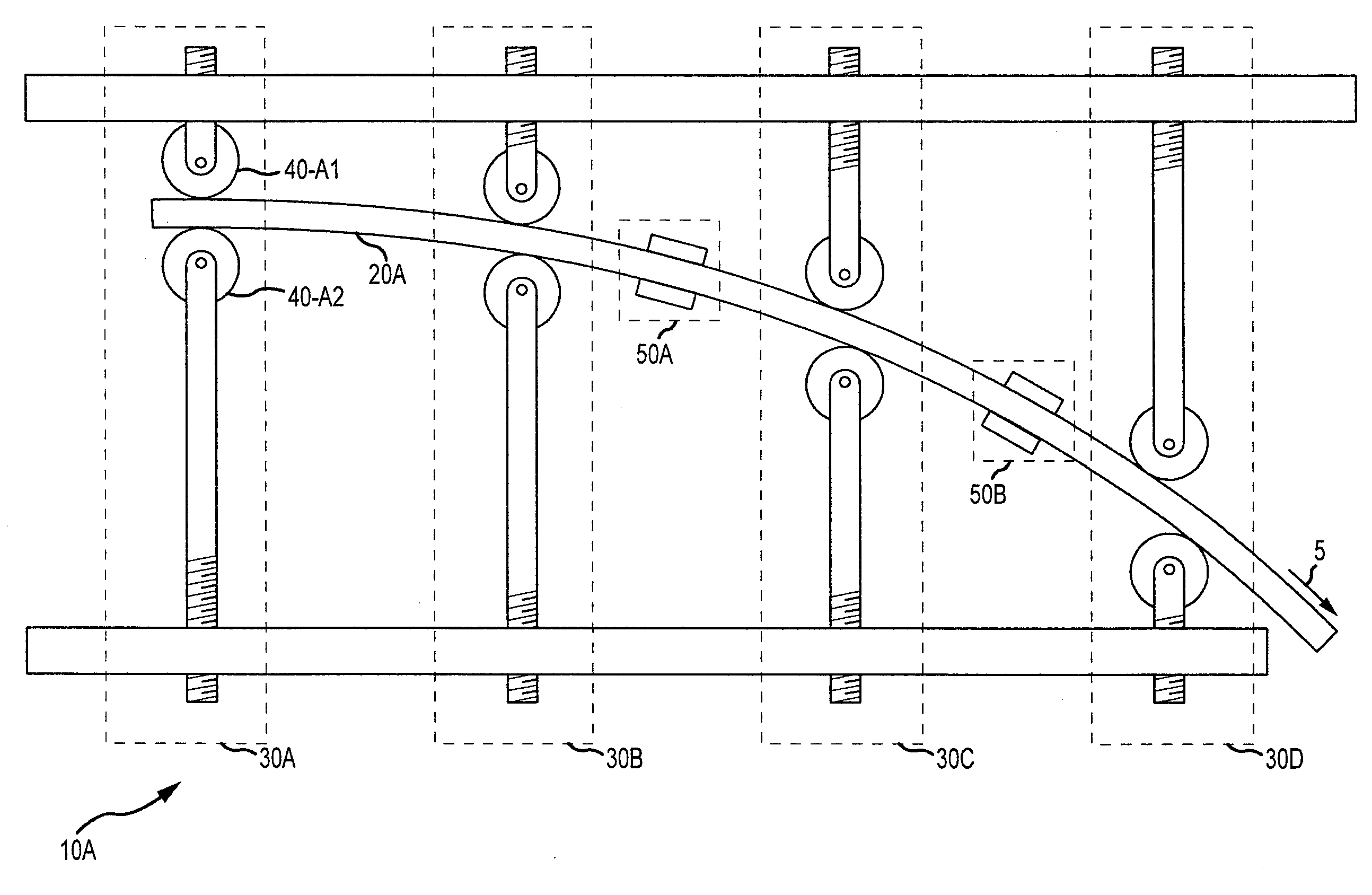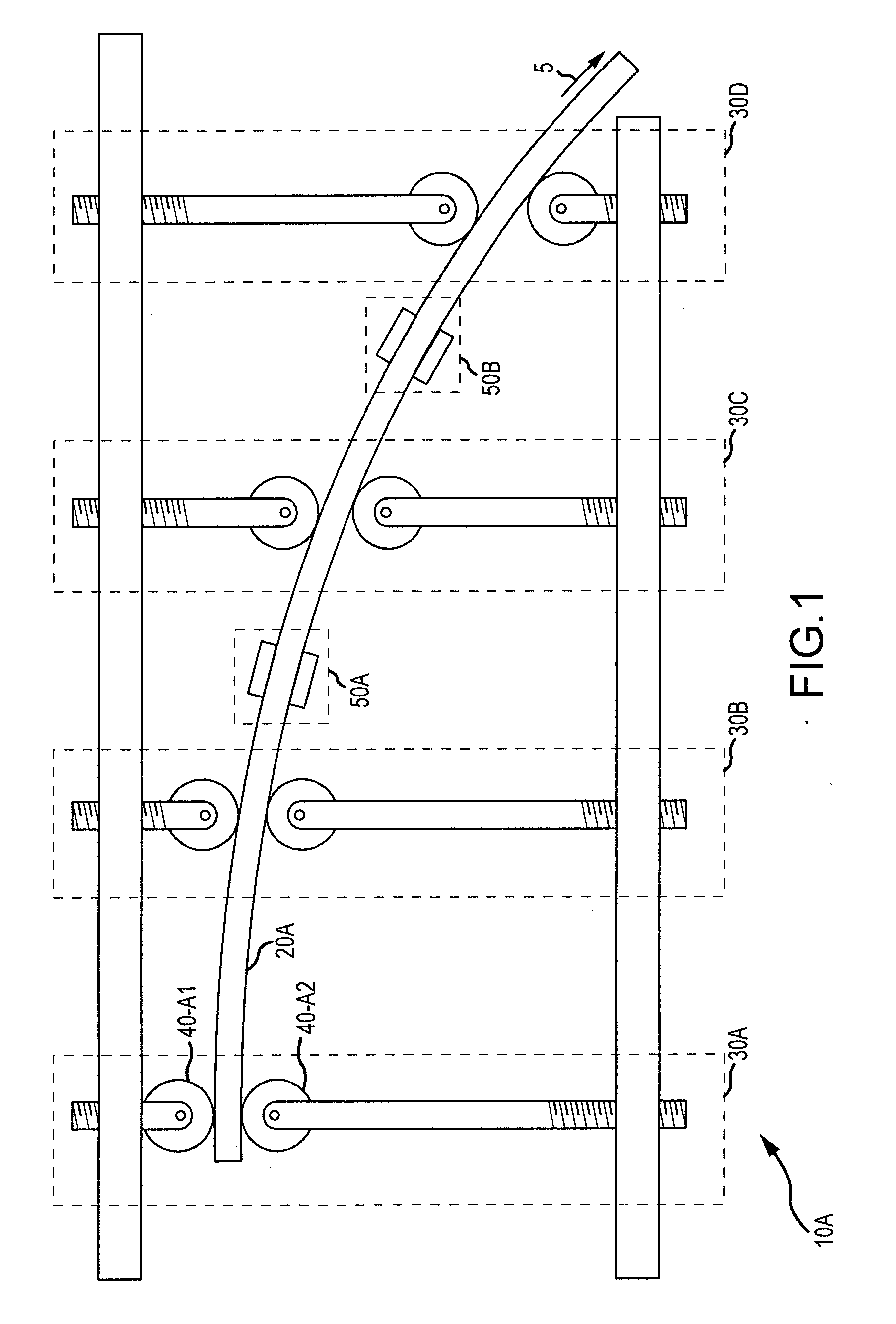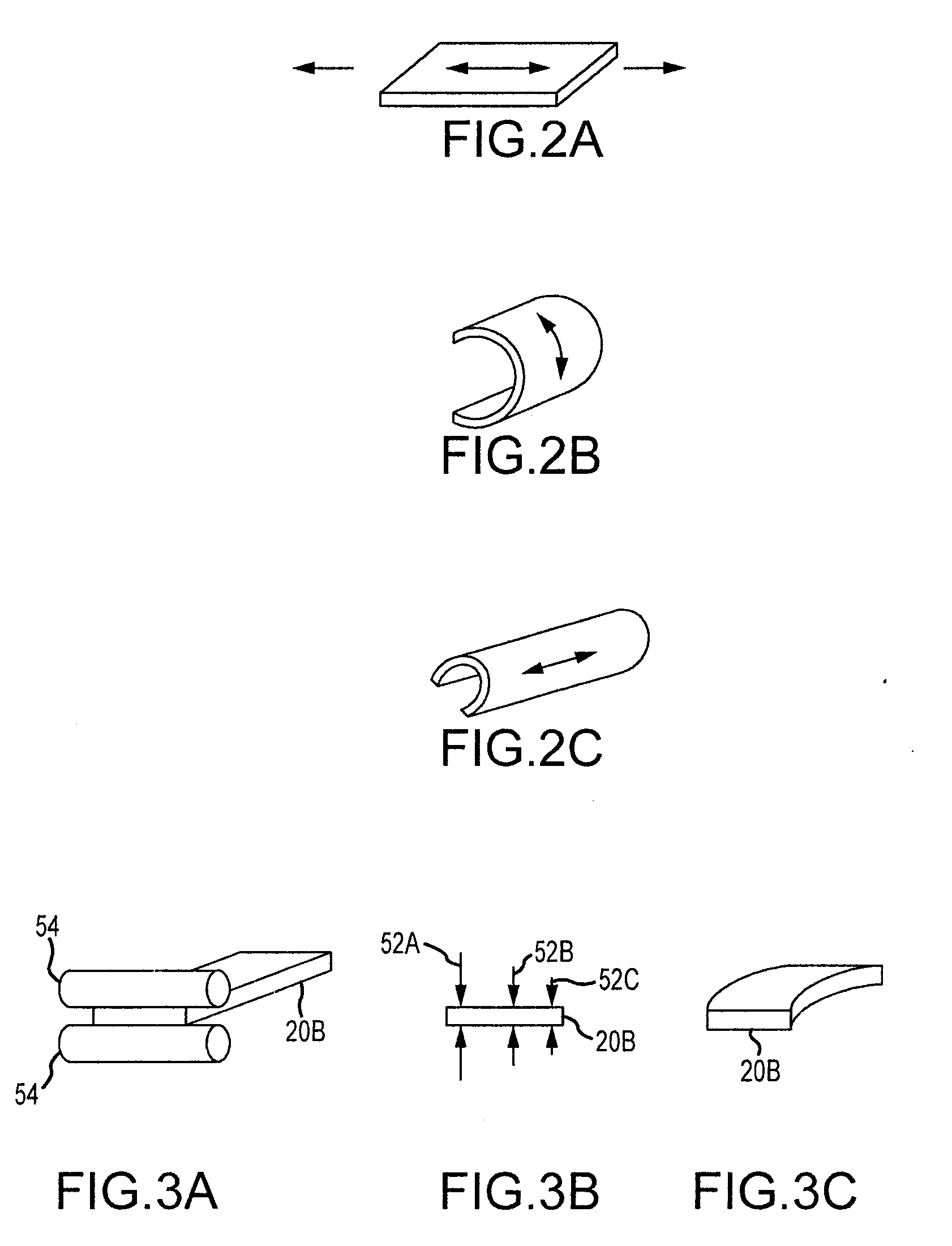Stretch Roll Forming
a technology of stretching roll and rolling pin, which is applied in the direction of metal-working feeding device, manufacturing tool, positioning device, etc., can solve the problems of limited maximum normal force that can be applied and limited magnitude of compressive stress sustainable, so as to reduce the spring back and residual stress in the fabricated component, and the effect of light and strong parts
- Summary
- Abstract
- Description
- Claims
- Application Information
AI Technical Summary
Benefits of technology
Problems solved by technology
Method used
Image
Examples
Embodiment Construction
[0031]Roll forming is a fabrication process of forming a work piece to a desired geometry by applying suitable forces by a plurality of roller stations that are precisely located and shaped with respect to a work piece. Forming is accomplished by relative motion between the work piece and a plurality of roller stations. The work piece can be sheet stock or a segment of stock of some preformed shape. In the stretch roll forming of the present invention, specific torque is applied to one or more of the rollers to cause a stretch that assists in forming the part into the desired shape while at the same time reducing residual stress in the work piece.
[0032]FIG. 1 illustrates the basic system 10A of the present invention. Each of a plurality of sequentially arranged roller stations 30A, 30B, 30C, and 30D includes a set of rollers, each set having at least two rollers where a roller is sometimes referred to as a die.
[0033]In the embodiment illustrated in FIG. 1, a flat strip is stretched ...
PUM
| Property | Measurement | Unit |
|---|---|---|
| aspect ratio | aaaaa | aaaaa |
| stretching force | aaaaa | aaaaa |
| torque | aaaaa | aaaaa |
Abstract
Description
Claims
Application Information
 Login to View More
Login to View More - R&D
- Intellectual Property
- Life Sciences
- Materials
- Tech Scout
- Unparalleled Data Quality
- Higher Quality Content
- 60% Fewer Hallucinations
Browse by: Latest US Patents, China's latest patents, Technical Efficacy Thesaurus, Application Domain, Technology Topic, Popular Technical Reports.
© 2025 PatSnap. All rights reserved.Legal|Privacy policy|Modern Slavery Act Transparency Statement|Sitemap|About US| Contact US: help@patsnap.com



